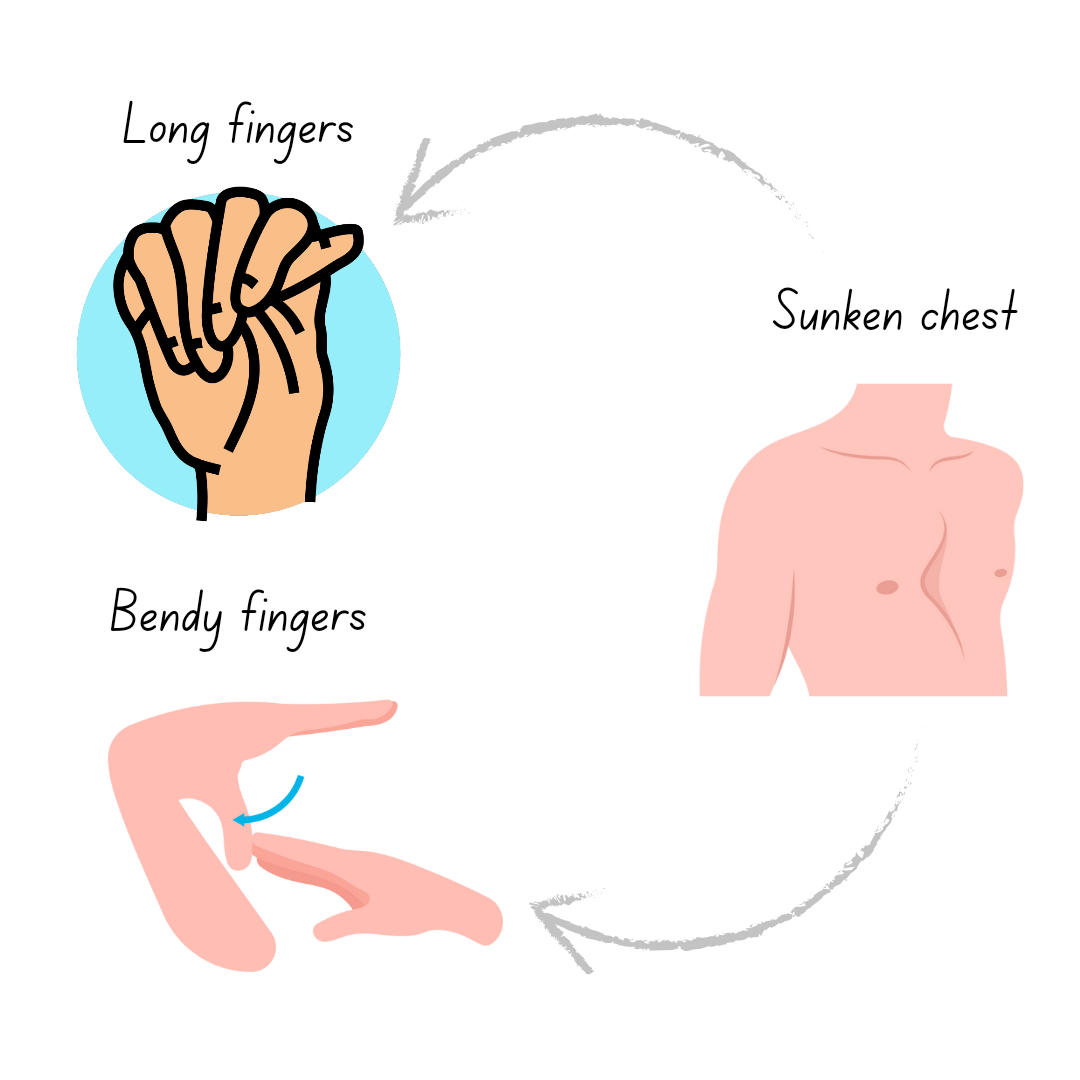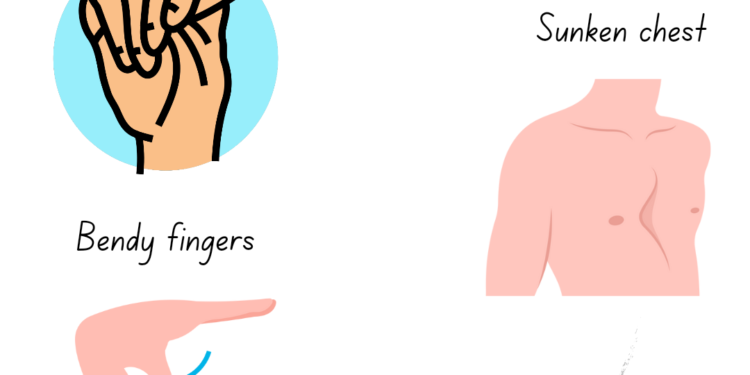Marfan syndrome is a genetic condition that affects the connective tissue. The connective tissue helps support the organs, bones, and blood vessels. Having Marfan syndrome means the connective tissue doesn’t work as well as it should. This genetic condition is pretty rare, affecting “1 in 3000 to 5000 individuals.”
Marfan Syndrome is usually passed down from parents to children through genes. So what this means is that if one parent has the condition, there’s a 50% chance their child could have it too. But this condition can be a little tricky since some percentage of people still have it even though no one in their family has it. In this article, we’re going to describe what this syndrome looks like, its symptoms, and other causes.

Causes of Marfan Syndrome
Aside from being passed down from parents to children, this condition can happen because of genetic mutations in the FBN1 gene. These changes or mutations in the DNA occur naturally. These mutations can happen for no clear reason (spontaneous mutations) or be passed down from parents with mutated genes.
In other cases when the mutated genes weren’t passed down from the parents, the mutation happens during the formation of reproductive cells (sperm or egg). Genetic mutations like this can happen during cell division, where small errors in copying DNA can lead to changes in the genes. These changes then affect how the gene functions, leading to genetic disorders like Marfan syndrome.
Symptoms of Marfan Syndrome
When you see people with this syndrome, they always have certain noticeable traits. They are very tall with arms that are longer than usual, same with their toes, legs, and fingers. Their joints can be really flexible which causes them joint pain. Other symptoms include:
- Tall and long fingers, toes, arms, or legs
- Bendy joints
- Curved back (scoliosis)
- Chest sticking out or sinking in
- Vision problems
- Heart problems
- Stretch marks
What Marfan Syndrome Does To The Body
Marfan syndrome happens because of a change in a gene called FBN1. This gene helps the body to make a protein called fibrillin-1 which helps to build connective tissue. The connective tissue supports the skin, bones, eyes, and even the blood vessels; it literally holds everything together and gives it strength and flexibility.
In a case of this syndrome, the body either makes too little fibrillin-1 or makes it incorrectly. This weakens connective tissue and makes parts of the body like the heart and blood vessels weak and stretchy. Because of that, people suffering from Marfan syndrome have long limbs, joint problems, and heart issues.
Conclusion
If you notice that you or someone in your family is really tall and has long arms, legs, fingers, or toes, it might be a sign to see a doctor. Now, for newborns, figuring out if they have Marfan syndrome can be a bit tricky. Sometimes, if a baby is longer than usual or has long fingers and a chest that looks a little sunken or sticks out, it could be a sign of Marfan syndrome, so you have to check with the doctors. Also, if they seem really flexible or if there’s a heart murmur, that could be a clue.
















